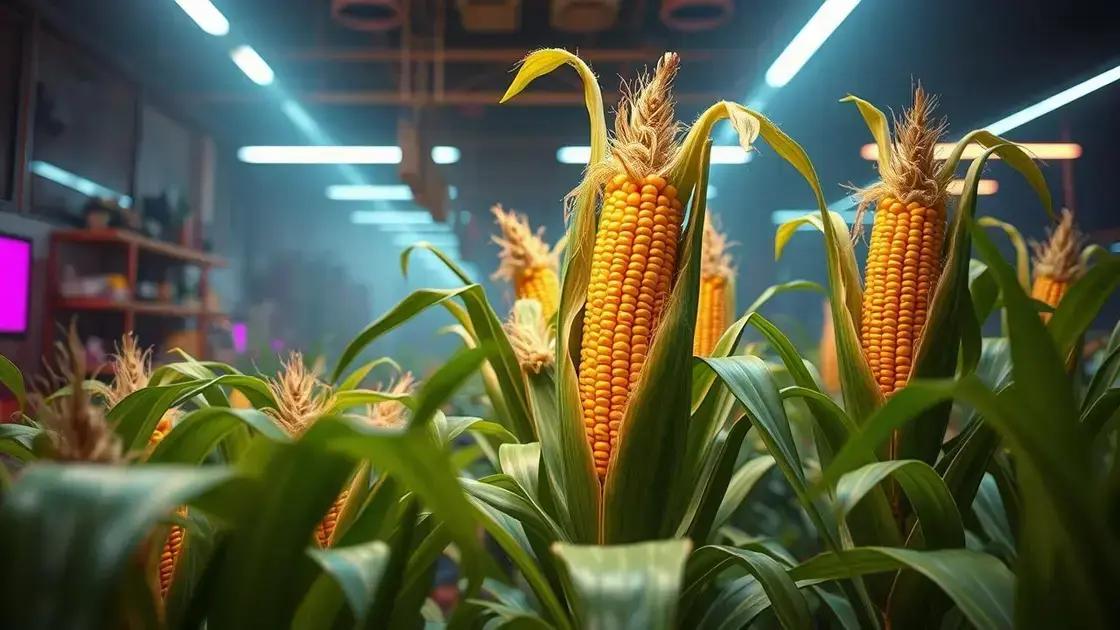How to Care for a Corn Plant Indoors: 5 Essential Tips for Success
How to care for a corn plant indoors is often a question on the minds of novice and seasoned plant enthusiasts alike. Envisioning flourishing greenery can ignite a passion for indoor gardening. To cultivate a healthy corn plant, understanding tailored light needs, watering routines, and nutrient selections can transform your indoor space. Dive into these key elements that contribute to the well-being of your corn plants.
Table of Contents
ToggleKey light requirements for thriving corn plants
Key light requirements for thriving corn plants are essential for achieving vibrant growth indoors. Corn plants love bright, indirect sunlight, which plays a critical role in their development. Understanding how to provide the right lighting can significantly affect your indoor gardening success.
Understanding light needs
- Corn plants thrive best in bright, indirect light. A spot near a window with filtered sunlight works well.
- Avoid direct sunlight for extended periods, as it can scorch the leaves.
- Position your corn plant where it can receive about 12–14 hours of light each day for optimal growth.
Determining the right light source
- Natural light: Place the corn plant near a window facing east or west and use sheer curtains to diffuse the sunlight.
- Artificial light: If natural light is limited, consider using grow lights. LED or fluorescent lights are effective options.
- Ensure that artificial lights are kept on for at least 12–16 hours a day to mimic natural conditions.
Signs of inadequate light
- Leggy growth: If the plant starts to grow tall and spindly, it may be stretching for light.
- Pale or fading leaves: Lack of adequate light can cause the vibrant green color of the leaves to wash out.
- Slow growth rate: If your corn plant isn’t growing as expected, it might need more light.
Providing supplemental lighting
If your corn plant is not getting enough light, consider incorporating supplemental lighting into your routine. Many indoor gardeners have success by:
- Using a combination of natural and artificial lights for balanced exposure.
- Adjusting the light source’s distance to ensure the right intensity.
For more tips, consider exploring indoor gardening techniques that can enhance your corn plant care strategy and improve overall plant health.
Effective watering schedules for indoor corn care

Effective watering schedules for indoor corn care are crucial for maintaining healthy and thriving plants. Establishing the right routine helps to prevent both under-watering and over-watering, ensuring your corn plants flourish.
Understanding corn plant watering needs
- Corn plants like their soil to be consistently moist but not soggy.
- Typically, watering should be done every 1–2 weeks depending on factors such as season, humidity, and pot size.
- Use room temperature water to avoid shocking the plant.
Creating a watering schedule
- Daily check: Observe the top inch of soil; if it feels dry, it’s time to water.
- Watering frequency: In warmer months, you may need to water more frequently compared to cooler months.
- Seasonal adjustments: During winter, reduce the frequency as the plant’s growth slows down.
Signs of proper watering
- Green, healthy leaves without browning or wilting.
- Growth that is steady and consistent.
Identifying over-watering and under-watering
- Over-watering: Yellowing leaves, mushy stems, and root rot may indicate too much water.
- Under-watering: Leaves may become crisp and brown at the edges.
To improve your watering technique and ensure your corn plants thrive, consider exploring indoor gardening techniques that cater to specific needs.
Fertilization tips and soil choices for indoor corn plants
Fertilization tips and soil choices for indoor corn plants are vital to ensuring optimal growth and health. The right nutrients and quality soil can significantly enhance your corn plant’s development.
Understanding nutrient needs
- Corn plants require key nutrients such as nitrogen, phosphorus, and potassium for strong growth.
- Choose a balanced fertilizer with an N-P-K ratio appropriate for corn, like 10-10-10 or 20-20-20.
Best fertilization practices
- Frequency: Fertilize every 4-6 weeks during the growing season.
- Application method: Mix granulated fertilizer into the soil or use a liquid form for direct application.
- Watering afterward: It’s essential to water the plant after fertilization to help distribute nutrients.
Choosing the right soil
- Opt for a well-draining potting mix, which encourages healthy root growth.
- Consider a soil blend enriched with organic matter, such as compost.
- A pH level between 6.0 and 7.5 is optimal for corn plants.
Signs of nutrient deficiencies
- Yellowing leaves may indicate nitrogen deficiency.
- Stunted growth or weak stems could signal a phosphorus shortage.
For additional insights into fertilizer choices and soil composition, explore exploring indoor gardening techniques that can enrich your care routine.
In conclusion
Caring for corn plants indoors requires attention to key elements such as light, water, soil, and nutrients. By understanding the specific needs of corn plants, you can foster a thriving indoor garden. Remember to monitor your plants for signs of stress and adjust your care accordingly. For more information and community support, check out tips on enhancing your indoor garden that can help you on your gardening journey.

